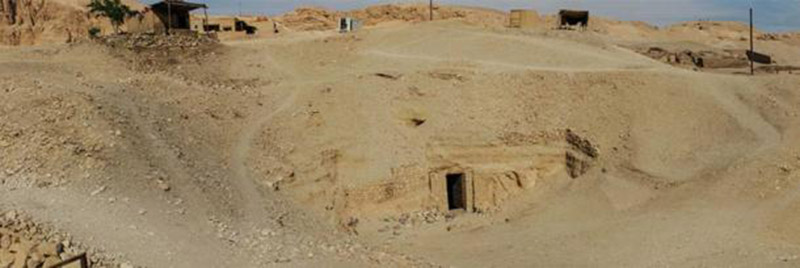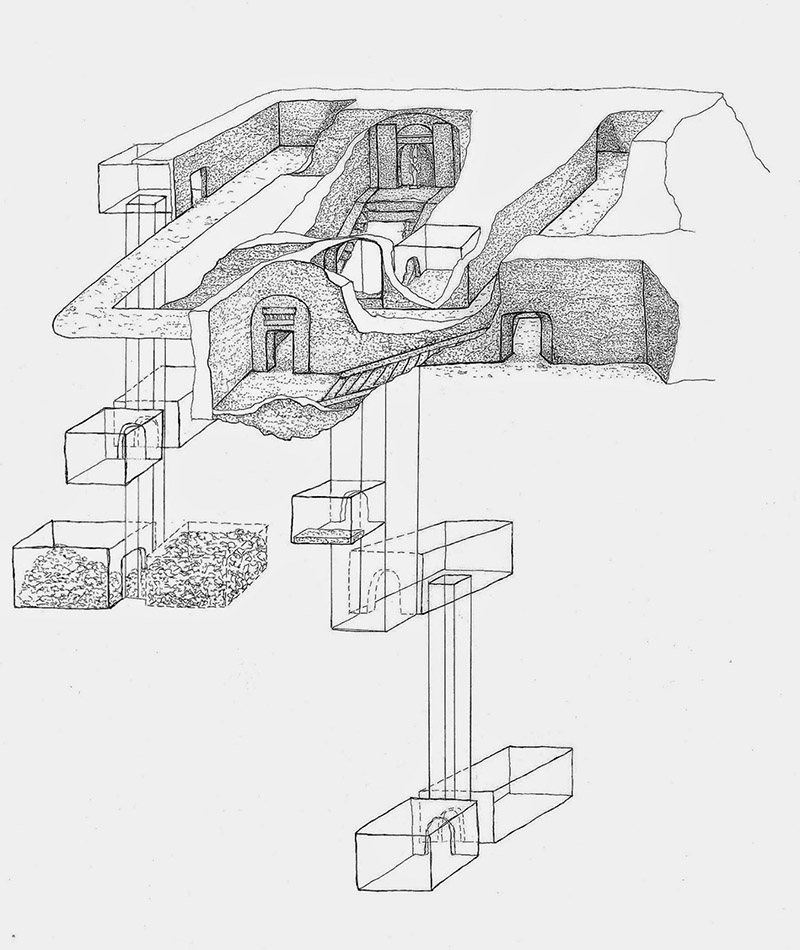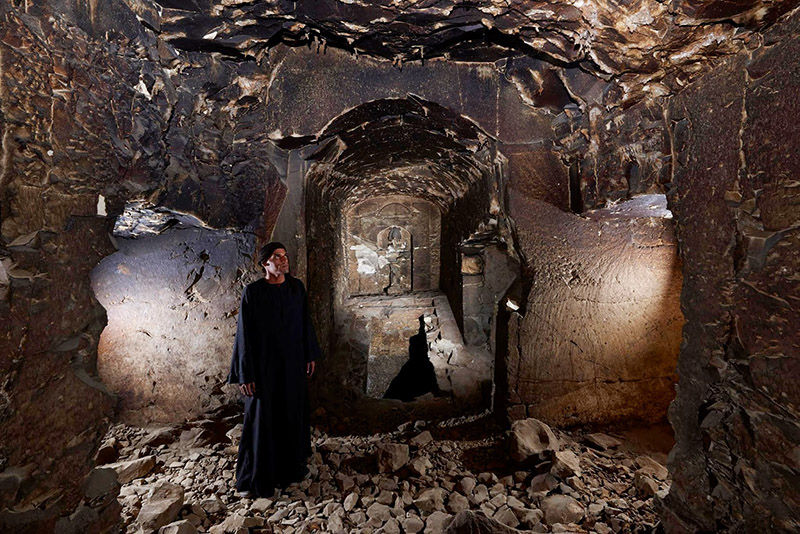Archaeologists Discover Ancient Egyptian Tomb Of Osiris, God Of The Dead
January 3, 2015
A Spanish-Italian archaeological team, in cooperation with the Egyptian Ministry of Antiquities, has made an incredible discovery in Qurna, Egypt - an enormous ancient reproduction of the mythical Tomb of Osiris as described by Egyptian legend, complete with multiple shafts and chambers.
Photo by Matjaz Kacicnik / Min Project
Inside the tomb complex, researchers found a carving of Osiris and a room with a wall relief depicting a demon holding knives.
According to the Spanish news agency EFE, the tomb embodies all the features of the tomb of Osiris, as told in ancient Egyptian legends, and is a smaller version of the design of the Osireion, built under Egyptian pharaoh Seti I in the city of Abydos, Luxor. Researchers believe the tomb complex dates back to the 25th dynasty (760 - 656 BC) or 26th dynasty (672 - 525 BC), based on a comparison to similar tombs that contain Osirian elements.

Entrance / Credit: Min Project
After a transversal hall supported by 5 pillars, a staircase goes down into the bedrock leading to a complex dedicated to the god of the dead, Osiris. A statue of Osiris is located in a chapel with a vaulted ceiling in the middle of an intricate structure. In front of the Osiris statue there is a staircase with a shaft cut into it. This shaft goes down for about 9 meters, leading to a room and a second shaft, which is about 6 meters deep, ending in the deepest part of the monument.

Drawing by: Raffaella Carrera / Min Project
To the west of the central temple is a funerary room with the reliefs of demons holding knives. The leader of the Spanish-Italian team that uncovered the tomb, Dr. María Milagros Álvarez Sosa, told EFE that the demons are there to protect the body of the deceased.
The symbolism of Osiris is very evident here, since all the elements recalling the mythical "Osiris tomb" are present: a big staircase of 3,5 meter long with a 4 meter high ceiling at the bottom leading to the Netherworld and another one leading directly to the Osiris statue, which is therefore at a higher level and ideally isolated on "his island"; the Osiris statue itself; the empty corridor surrounding it which symbolizes the channel of water (see Osireion in Abydos); the expected burial chamber below the statue, thus identifying the deceased with Osiris.

Photo by Matjaz Kacicnik / Min Project
According to Egyptian mythology, Osiris, god of the underworld, was killed by Set, god of storms, disorder and violence, who shut Osiris in a coffin and threw it in the Nile river. After his body was recovered by Isis, Set tore his body into pieces and threw them back into the river. Isis collected all the pieces and bandaged the body together. This form of Osiris traveled to the underworld in a boat and became god of the dead.
The only body part Isis could not locate was the phallus, as it had been eaten by catfish. Isis created a golden phallus and briefly brought Osiris back to life with a spell, which gave her enough time to become pregnant by Osiris before he returned to death. Isis later gave birth to Horus, who became seen as a representation of new beginnings and the destroyer of the evil Set.
Via Ancient Origins, Luxor Times, EFE
Click Here For The Most Popular On Sunny Skyz
 Boy With Down Syndrome Nails The Whitney Houston Challenge, And The Crowd Goes Wild
Boy With Down Syndrome Nails The Whitney Houston Challenge, And The Crowd Goes Wild
 Husband Rents Mall Store To Share His Late Wife's Beloved Christmas Display
Husband Rents Mall Store To Share His Late Wife's Beloved Christmas Display
 The ŌĆśGrandma StandŌĆÖ Is Bringing Comfort And Connection, One Conversation At A Time
The ŌĆśGrandma StandŌĆÖ Is Bringing Comfort And Connection, One Conversation At A Time
 This Priest Secretly Became A Masked Wrestler To Fund An Orphanage
This Priest Secretly Became A Masked Wrestler To Fund An Orphanage
 The Funniest Wildlife Photos Of 2025 Are Here ŌĆö And TheyŌĆÖre Hilarious
The Funniest Wildlife Photos Of 2025 Are Here ŌĆö And TheyŌĆÖre Hilarious
 This 30-Year-OldŌĆÖs Christmas Gift To His Mom Is Going Viral
This 30-Year-OldŌĆÖs Christmas Gift To His Mom Is Going Viral
 Dad Jokes With Tom Hardy And His Dad
Dad Jokes With Tom Hardy And His Dad
 After 2 Years Apart, Siblings In Foster Care Are Finally Reunited
After 2 Years Apart, Siblings In Foster Care Are Finally Reunited
 The Hug That Went Viral On Facebook
The Hug That Went Viral On Facebook
 You Have To See This 'Piggy Train' Trotting Through The Snow
You Have To See This 'Piggy Train' Trotting Through The Snow
 SheŌĆÖs Been Helping Hungry Children For Years ŌĆö This Christmas, Someone Helped Her
SheŌĆÖs Been Helping Hungry Children For Years ŌĆö This Christmas, Someone Helped Her
